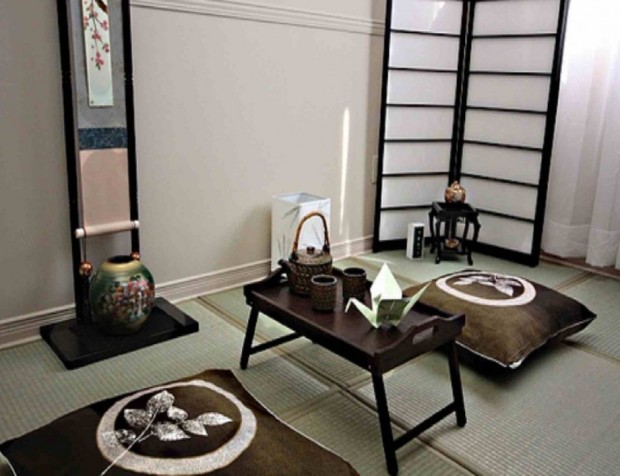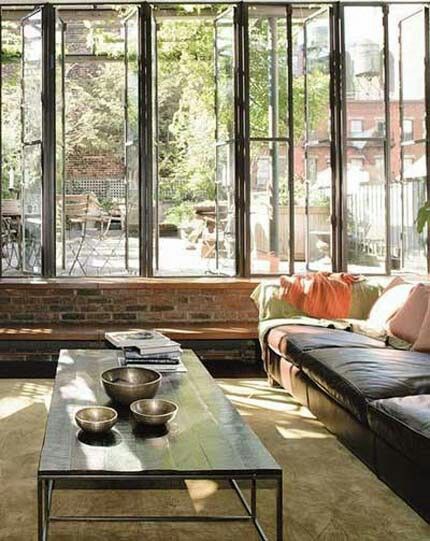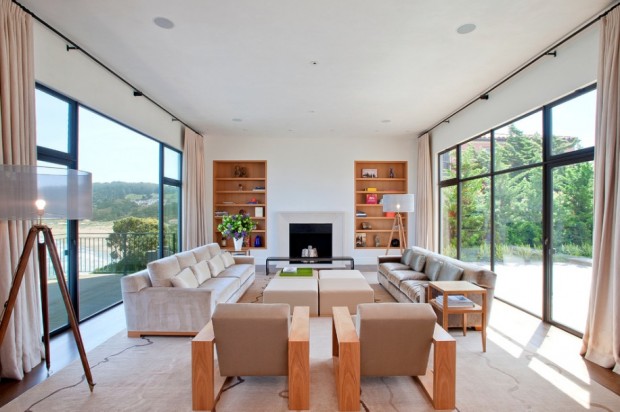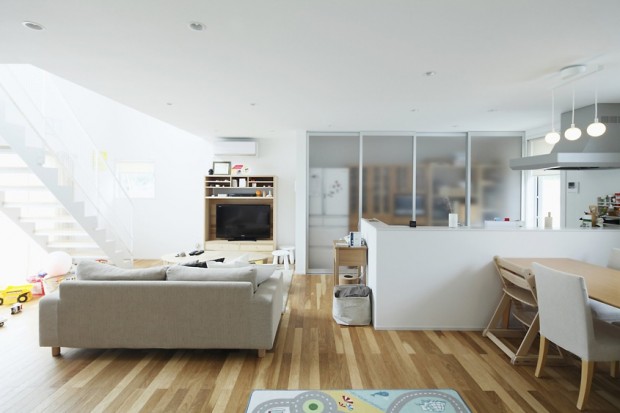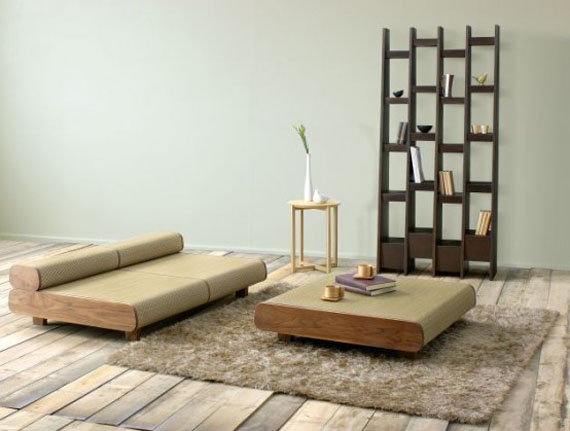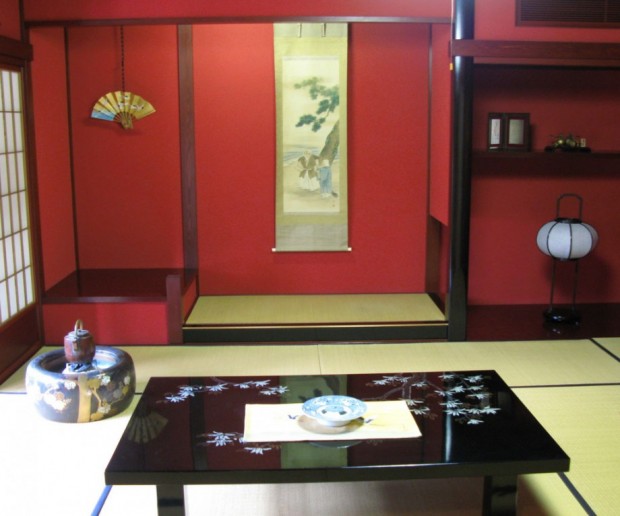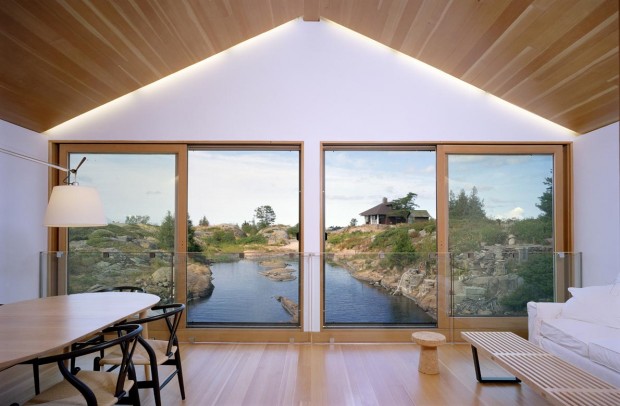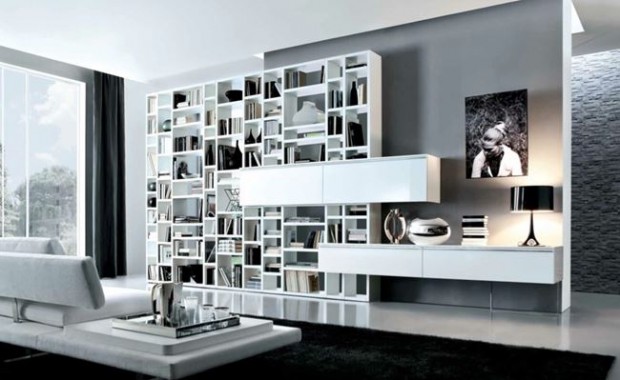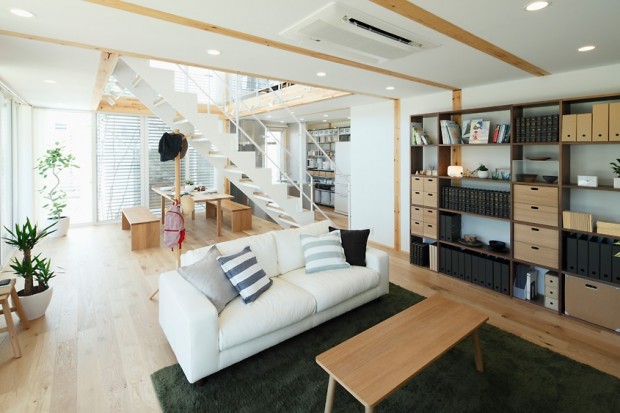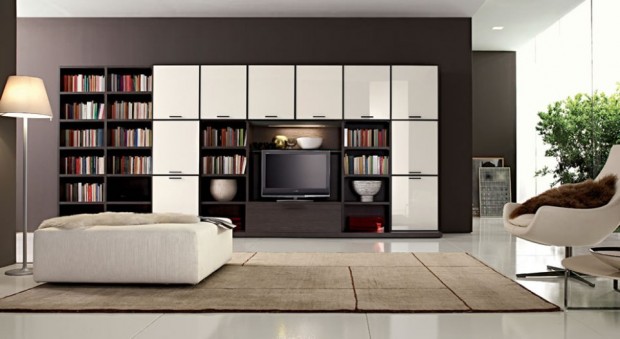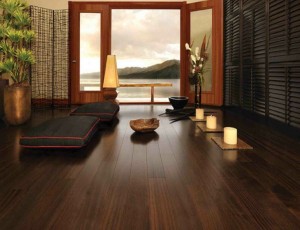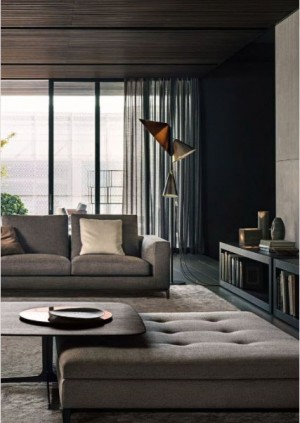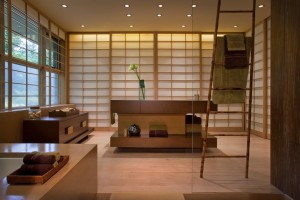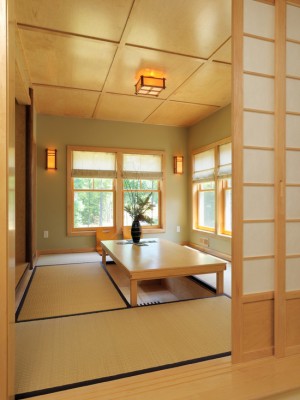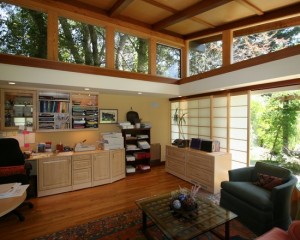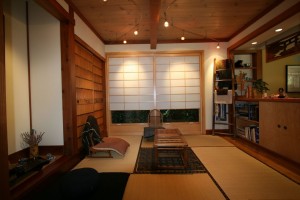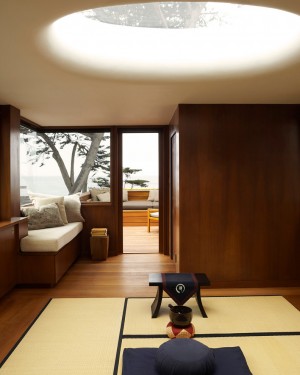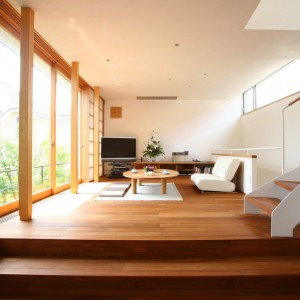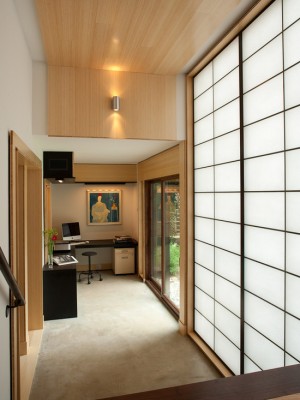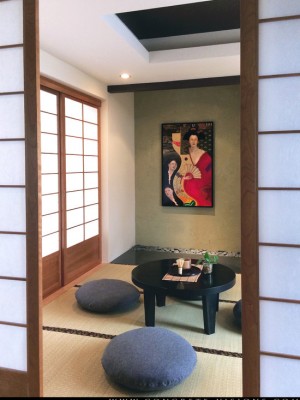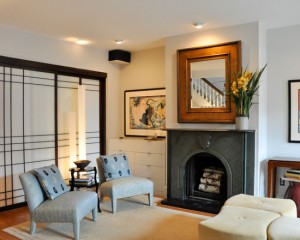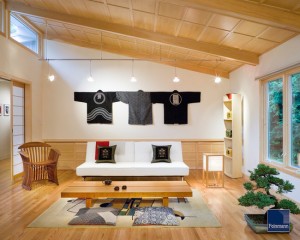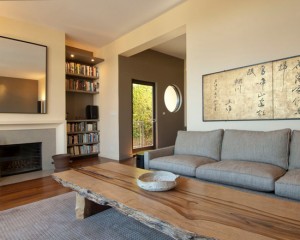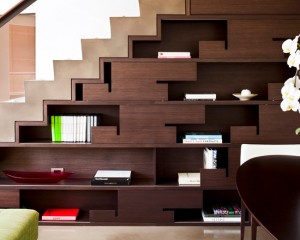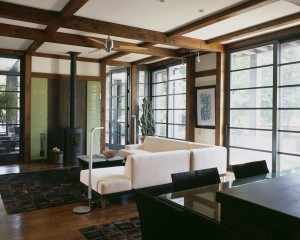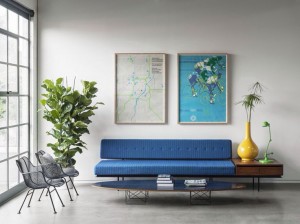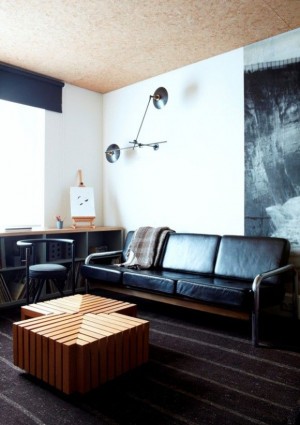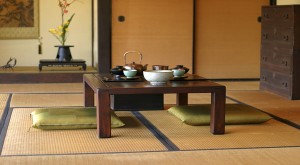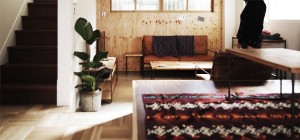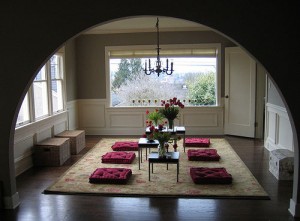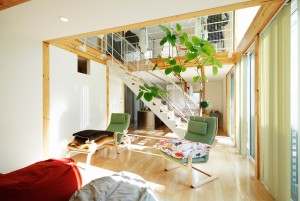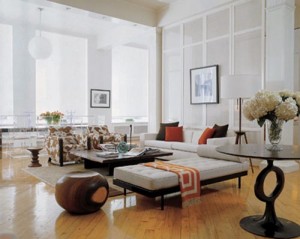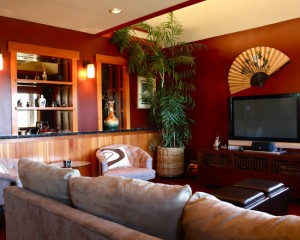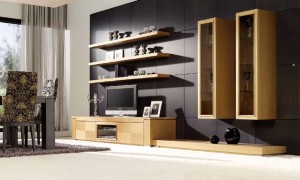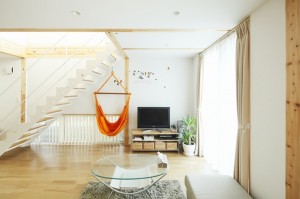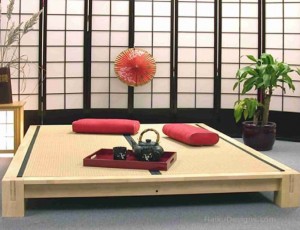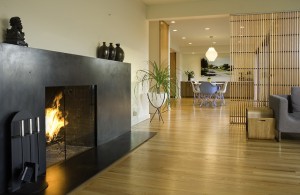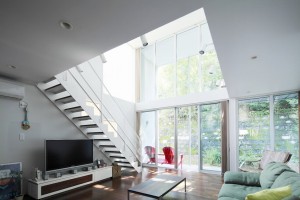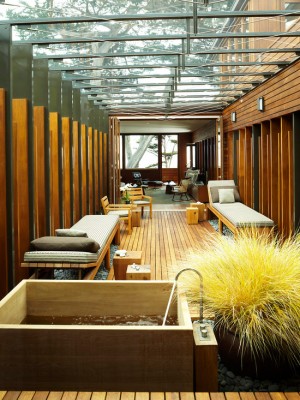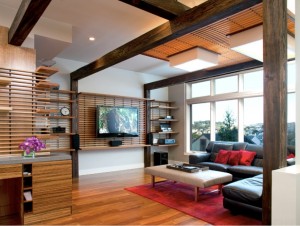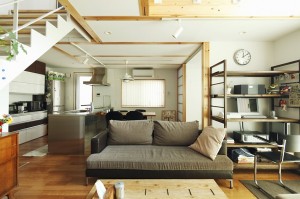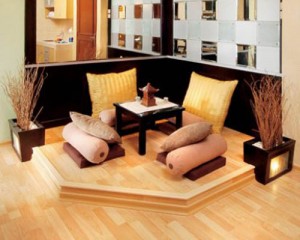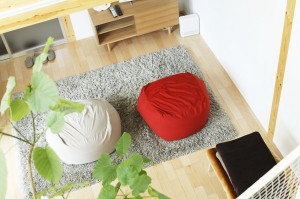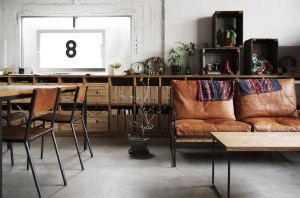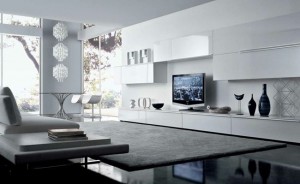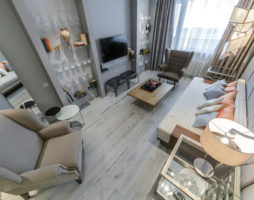The living room is a special room. She has expanded functional loads, therefore, increased attention is involuntarily shown to the design of this room. Oriental styles of decor, in particular Japanese, are of particular interest to residents of megacities. It is certainly beautiful and is completely dedicated to the idea of the unity of man and nature. However, having settled on the Japanese style, you need to be prepared for the fact that there will not be much originality in the interior. Moreover, it will turn out traditionally dry and rather ascetic. This is due to the fact that a Japanese-style living room should be conducive to contemplation, philosophical reflection, detachment from pressing problems and relaxation. And they achieve this effect not so much by exact copying of the decor, but by using materials corresponding to the style and the color palette characteristic of the ancient culture.
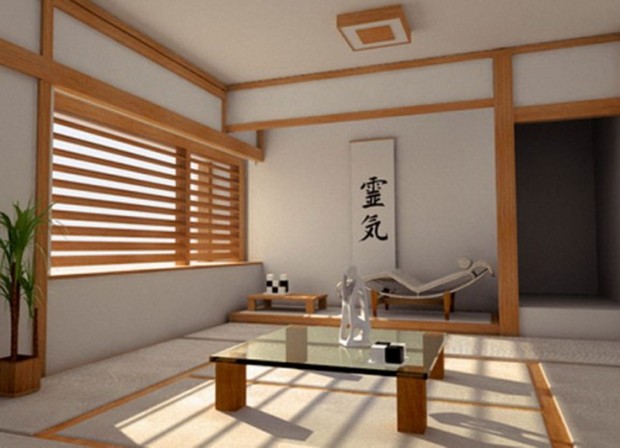
usage wood in the living roommade in Japanese style
Characteristic features of Japanese style in interiors
It is recommended to decorate the windows of the Japanese-style living room with sudare. These bamboo blinds are lightweight, decorative, and great at blocking out the pesky sun.
The main distinguishing feature of the Japanese interior is a clear zoning of space. For these purposes, exclusively unique partitions, known to ordinary people under the generalized name - shoji. Professional designers generally prefer to work with varieties such as bebu and fasuma. Undoubtedly, these are the most expensive subspecies of classic screens, because such decorative materials as rice paper, natural wood and silk are used to make such elements, but only with their participation can a truly impeccable Japanese-style living room interior be born.
Images on the partitions are applied with mineral paints or ink. Mostly draw traditional motifs. Most often it is:
sakura;
- Japanese villages;
- misty mountains;
- tigers;
- dragons;
- singing birds;
- samurai.
With the help of partitions, you can always independently change the space in accordance with your mood or according to situational needs. Sliding partitions always have an even number of doors. In paper bebu, for example, there are six of them.
Fusume is most often assigned the role of sliding doors. Silk-covered wooden frames are inserted into special grooves fixed under the ceiling and in the floor.
It is recommended to decorate the windows of the Japanese-style living room with sudare. These bamboo blinds are lightweight, decorative and provide excellent protection from the annoying sun.
The ceiling should also be light, so it is often upholstered with the same bamboo or wood. You can lay out the surface with frosted glass plates and “revive” such a ceiling with hidden lighting.Stretch ceilings are also appropriate in such an interior, but the canvas must certainly be monophonic and not shiny.
In Japanese houses, the floors are always covered with straw mats - tatami. They have a standard size and in the Land of the Rising Sun often serve as a measure of area. The traditional tatami has three layers. It is based on toko (straw woven with hemp or synthetic thread). The boundary layers are a thin mat woven from reeds. It happens that the surface of the mat is woven from hemp and decorated with heri. Such tatami are distinguished by their quality and high cost, and therefore they are used only for tea ceremonies.
back to index ↑Japanese-style living room: color and light
The color palette, characteristic of the Japanese style, is distinguished by its calmness and neutrality. It includes beige, white, cream tones. The natural beauty of the color of sakura buds, lotus petals, rice paper, light birch, young bamboo shoots is emphasized by contrasting dark finishing lines that mimic the tones of dark walnut or black ash. As in other basic variations of minimalist styles, Japanese interiors combine no more than three colors and adhere to absolute restraint in solving color problems.
Proper lighting can emphasize the beauty of color contrasts and arrange a real play of shadows. In no case should it be too bright and exude with the usual sconces or chandeliers. A Japanese-style living room should be lit with traditional toro lanterns for this culture.. The frames of these round or square lighting fixtures are made of metal, bamboo or wood. The role of the lampshade is performed by the well-known rice paper. Suitable for modern technology spot lighting.
back to index ↑Furniture
Furniture in the Japanese interior is also specific. To furnish the room, “undersized” elements are used, and the lower, say, the buffet, the closer it will be to the style. In general, in a minimalist Japanese interior, you need to introduce furniture with smooth, completely flat surfaces that do not have voluminous decorative splendor. Sliding wardrobes, sliding systems disguised as screens, drawers or various shelves of tokonome niches will perfectly support the samurai spirit of your living room.
Wooden furniture will decorate the decor with asymmetrical floral ornaments, and the images of bamboo, birds and sakura on lampshades and textiles will complete the creation of the original atmosphere.
back to index ↑Oriental interior decorative accessories
You also need to decorate the living room in a specific Japanese style with traditional elements, among which there must certainly be vases, figurines and a rock garden. For all their modesty, such delights look unusual and arouse keen interest among guests. However, even in the most successfully decorated, in the traditional sense, room, not all Europeans are comfortable. The absence of the usual armchairs and chairs, tables and sofas with legs plunge visitors into a slight shock. Not everyone who comes to your house is ready to sit on a mat, so in our variations of the Japanese interior there is a need to harmoniously fit into it such benefits as a TV, music center, and upholstered furniture.
True Japanese style does not allow individualization of space. That is, on the walls of the living room you will not be able to hang photographs and handicrafts, and on the shelves to arrange knick-knacks and souvenirs brought from travels. There will be no way to “soften” the atmosphere with cute cushions and cozy blankets. A Japanese-style living room should not have unnecessary details, but, nevertheless, it should be comfortable.. Trying to harmonize an ascetic interior is not for the faint of heart.
back to index ↑materials
It is unreasonable to refuse synthetic analogues when arranging a Japanese-style living room.
As for consumables, only natural options are suitable for the Japanese style. Rattan, light wood, matting, bamboo, river pebbles feel great here. The use of artificial fabrics, leather substitutes, plastic items in such an interior is considered bad manners. The exceptions are imitation substitutes for cork, rice paper and grass. These materials in their natural form cannot become a durable and practical finish due to the peculiarities of our climate. It is unreasonable to refuse synthetic analogues when arranging a living room in the Japanese style, since these finishing materials perfectly hide the flaws of bumpy walls.
back to index ↑Adaptation tips
Adapting a Japanese interior to our usual vision of a comfortable living room is difficult, but possible.
Enliven the selected calm color scheme with bright color accents. It doesn't hurt to add a little joie de vivre to an emotionally sparse environment.
You can use contrasting, shuffling the color palette of furniture tones and background finishes.
Introduce decorative elements such as lattices into the interior.
Floors, instead of lining with tatami, lay out a bamboo board or laminate, with a matte, non-glare finish.
Furnish the living room with furniture of the usual sizes. The main thing is that there should be no decor on its laconic facades, and the surfaces should be smooth.
To replace the sofa, equip a similar design on the podium and lay it out with pillows in plain pillowcases without patterns and decorations.
Replace traditional curtains with bamboo or straw blinds. Also, roller blinds with national ornaments will fit into the living room in Japanese style. Cork walls or decorative bamboo panels will add coziness to the ascetic atmosphere of the room.
It is better to hide objects, such as a TV and other equipment, behind one of the sliding panels present in the interior.
Arrange niches with shelves on which you can place Japanese dolls, netsuke collections, lanterns. A remote control for a TV, mobile phones and other useful little things will also settle down here.
back to index ↑Who is comfortable in a Japanese setting
Fans of the Japanese way of life and admirers of the philosophy of this culture feel most comfortable in a specific oriental setting.
The orderliness and simplicity of the Japanese-style living room are liked by residents of megacities who are disgusted by the dynamism and diversity of city streets.
Since this style is alien to the desire to shine and impress, it suits adherents of a modest life and those who are already tired of the splendor of classicism and pomp of modernity.
back to index ↑Conclusion
Japanese style is always brevity, straightforward simplicity, clear lines of corners and plenty of free space. Eastern philosophy can teach you to find inspiration even in the most ordinary and primitive things, so not only a carefully thought-out ikebana or dwarf trees, but also an unlucky fan with a simple landscape pattern may well become an element of decor. All in all, a Japanese style living room can be designed and decorated according to your preferences.Keep in mind that you are making a stylized room, not a replica of a Japanese farmer's house, so there is plenty of space in the interior for comfort items that are not directly related to this culture. Use a little decorating tricks and your living room will surely turn out stylish and truly exotic.
